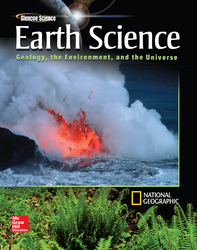1 A) high, high B) low, high C) low, low D) high, low 2 <a onClick="window.open('/olcweb/cgi/pluginpop.cgi?it=jpg::::/sites/dl/free/0078746361/561686/62_tempro_gm_150c.jpg','popWin', 'width=NaN,height=NaN,resizable,scrollbars');" href="#"><img valign="absmiddle" height="16" width="16" border="0" src="/olcweb/styles/shared/linkicons/image.gif"> (16.0K)</a> A) the temperaturcline B) the trophocline C) the thermocline D) the tomocline 3 A) salinity and temperature B) temperature and currents C) salinity only D) temperature only 4 A) increasing B) decreasing C) constant D) always changing 5 A) to record animal sightings B) to take accurate samples from the sea floor C) to map the ocean floor D) to record surface temperatures 6 A) the ozone hole B) X rays C) ultraviolet radiation D) the greenhouse effect 7 A) spring tides B) density currents C) surface currents D) ocean currents 8 A) wave height B) direction of waves C) wavelength D) surface currents 9 <a onClick="window.open('/olcweb/cgi/pluginpop.cgi?it=gif::::/sites/dl/free/0078746361/561686/95_wavel_ss_151c.gif','popWin', 'width=NaN,height=NaN,resizable,scrollbars');" href="#"><img valign="absmiddle" height="16" width="16" border="0" src="/olcweb/styles/shared/linkicons/image.gif"> (15.0K)</a> A) bubbles B) water movement C) wavelength D) heat energy 10 A) precipitation as ice, water, or snow B) melting of glacial ice C) movement of ocean currents D) volcanic eruptions 11 A) the shells of marine organisms B) volcanic gases C) ultraviolet radiation D) evaporation 12 A) tidal range B) neap tide C) full moon D) riptide 13 A) equatorial seas B) polar seas C) years with long winters D) years with cold temperatures 14 <a onClick="window.open('/olcweb/cgi/pluginpop.cgi?it=jpg::::/sites/dl/free/0078746361/561747/ge15_ctp14_smaller.jpg','popWin', 'width=NaN,height=NaN,resizable,scrollbars');" href="#"><img valign="absmiddle" height="16" width="16" border="0" src="/olcweb/styles/shared/linkicons/image.gif"> (20.0K)</a> A) a zone of consistently warm water temperature B) a zone of consistently cool water temperature C) a zone where the water temperature rapidly decreases with depth D) a zone where the water temperature rapidly increases with depth 15 A) GPS B) submarines C) sonar D) UV radiation 16 A) rapid evaporation B) abundant precipitation C) larger clouds D) stronger winds 17 A) crest height B) wind speed C) current direction D) water depth 18 A) the varying depths of the oceans B) water temperature and salinity C) the movement of tectonic plates on the seafloor D) the rotation of Earth 19 A) 25 ppt B) 30 ppt C) 35 ppt D) 37 ppt 20 A) right on the ocean surface B) just below the ocean surface C) between the surface and seafloor D) at the bottom, where water is in contact with the seafloor














